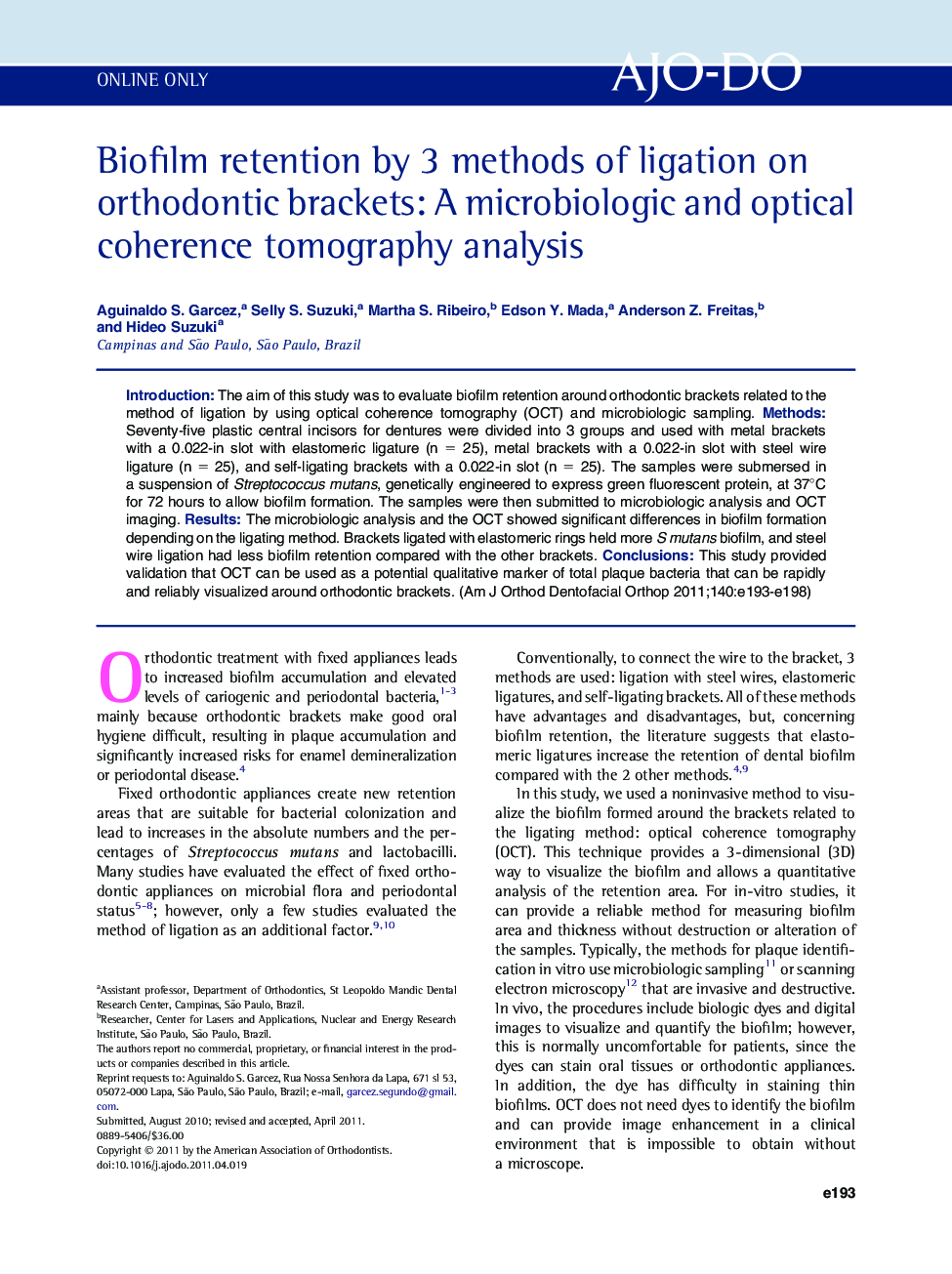| Article ID | Journal | Published Year | Pages | File Type |
|---|---|---|---|---|
| 3118192 | American Journal of Orthodontics and Dentofacial Orthopedics | 2011 | 6 Pages |
IntroductionThe aim of this study was to evaluate biofilm retention around orthodontic brackets related to the method of ligation by using optical coherence tomography (OCT) and microbiologic sampling.MethodsSeventy-five plastic central incisors for dentures were divided into 3 groups and used with metal brackets with a 0.022-in slot with elastomeric ligature (n = 25), metal brackets with a 0.022-in slot with steel wire ligature (n = 25), and self-ligating brackets with a 0.022-in slot (n = 25). The samples were submersed in a suspension of Streptococcus mutans, genetically engineered to express green fluorescent protein, at 37°C for 72 hours to allow biofilm formation. The samples were then submitted to microbiologic analysis and OCT imaging.ResultsThe microbiologic analysis and the OCT showed significant differences in biofilm formation depending on the ligating method. Brackets ligated with elastomeric rings held more S mutans biofilm, and steel wire ligation had less biofilm retention compared with the other brackets.ConclusionsThis study provided validation that OCT can be used as a potential qualitative marker of total plaque bacteria that can be rapidly and reliably visualized around orthodontic brackets.
